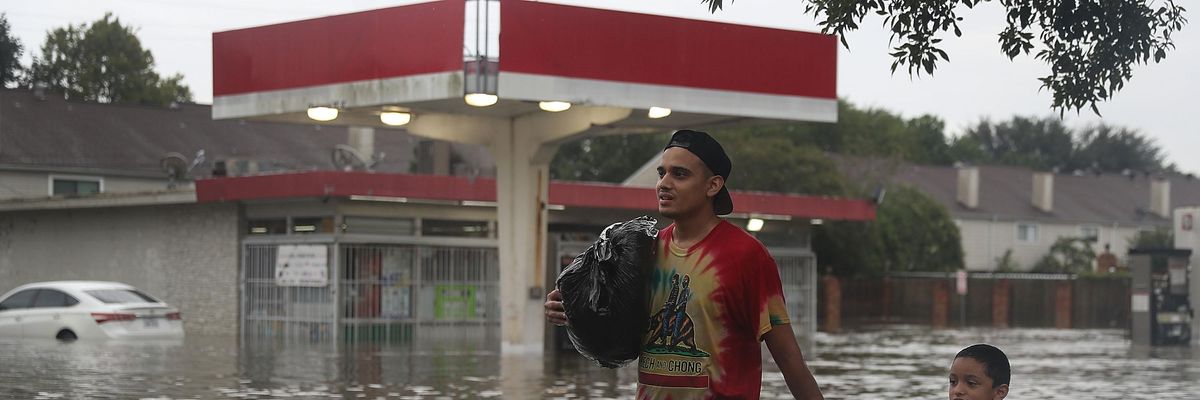Americans over the past decade have increasingly tried to elude the effects of the climate crisis by moving away from hurricane zones and areas where summers have grown hotter--only to end up in states where they are at greater risk for facing devastating wildfires.
Researchers at the University of Vermont (UVM) published a new study in Frontiers in Human Dynamics on Thursday following the largest-ever nationwide investigation of how the climate crisis and related factors are influencing U.S. migration patterns.
Titled "Flocking to Fire," the study shows that between 2010 and 2020, people most often moved away from areas across the Midwest and Great Plains, including counties that have been hit by frequent heatwaves and hurricanes.
The top destinations for people moving within the U.S. included the Pacific Northwest, the Southwest, and parts of the Southeast.
Much of the migration has transported people "into harm's way," lead author Mahalia Clark said in a statement, as they move "into regions with wildfires and rising temperatures, which are expected to become more extreme due to climate change."
"If these migration trends continue, more and more people will be in danger from heat and fire."
The researchers combined census data from the past decade with data on temperatures, weather, landscape, demographics, and socioeconomic factors.
The regions Americans most often left over that time period had some non-climate related commonalities including low employment rates and high income inequality, as well as higher levels of humidity in the summer, hurricanes, and heatwaves.
People tended to move toward places with proximity to water, moderate tree cover, moderate population density, and greater human development opportunities, but those factors also put them in wildfire zones across the West.
"Controlling for environmental and socioeconomic factors, people tended to move away from areas with more frequent heatwaves and hurricanes, but toward areas with greater risk of wildfires," reads the study. "These trends suggest that migration is increasing the number of people in harm's way."
Gillian Galford, a research associate professor at UVM's Rubenstein School of Environment and Natural Resources, said the study suggests "for many Americans, the risks and dangers of living in hurricane zones may be starting to outweigh the benefits of life in those areas."
With more people moving toward areas in the West, where millions of acres were burned this year as the U.S. recorded the most active wildfire season in more than a decade, people could soon make the same calculations about living in those parts of the country.
"That same type of tipping point has yet to happen for wildfires and rising summer heat," said Galford.
The researchers noted that city planners should consider discouraging new development in places where fires are most likely or where emergency workers may have the most trouble controlling them.
"If these migration trends continue, more and more people will be in danger from heat and fire," reads the study. "We hope our findings will contribute to more awareness of these growing dangers, while providing empirical evidence to guide planners and policymakers as they design strategies for climate resilience and hazard preparedness."
If migration away from areas plagued by wildfires does begin to rise in the coming years, Americans may struggle to truly escape the effects of the fires, which climate scientists say are fueled by global heating and the resulting high temperatures and extended drought conditions.
As Common Dreams reported in October, rising heat from wildfires in western states has been linked to extreme hail and rainstorms in areas up to 1,500 miles away.
"Most people still think of wildfires as just a problem in the West," said Clark, "but wildfire now impacts large swaths of the country--the Northwest down to the Southwest, but also parts of the Midwest and the Southeast like Appalachia and Florida."

